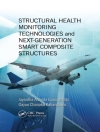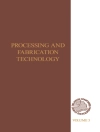Ionic polymer metal composites (IPMCs) can generate a voltage when physically deformed. Conversely, an applied small voltage or electrical field can induce an array of spectacular large deformation or actuation behaviours in IPMCs, such as bending, twisting, rolling, twirling, steering and undulating. An important smart material, IPMCs have applications in energy harvesting and as self-powered strain or deformation sensors, they are especially suitable for monitoring the shape of dynamic structures. Other uses include soft actuation applications and as a material for biomimetic robotic soft artificial muscles in industrial and medical contexts. This comprehensive volume on ionic polymer metal composites provides a broad coverage of the state of the art and recent advances in the field written by some of the world’s leading experts on various characterizations and modeling of IPMCs. Topics covered in this two volume set include uses in electrochemically active electrodes, electric energy storage devices, soft biomimetic robotics artificial muscles, multiphysics modeling of IPMCs, biomedical applications, IPMCs as dexterous manipulators and tactile sensors for minimally invasive robotic surgery, self-sensing, miniature pumps for drug delivery, IPMC snake-like robots, IPMC microgrippers for microorganisms manipulations, Graphene-based IPMCs and cellulose-based IPMCs or electroactive paper actuators (EAPap). Edited by the leading authority on IMPCs, the broad coverage will appeal to researchers from chemistry, materials, engineering, physics and medical communities interested in both the material and its applications.
Содержание
Fundamentals of Ionic Polymer Metal Composites (IPMCs); Ionic Polymer Metal Composites (IPMCs) Optimal Manufacturing; Graphene-based Ionic Polymer Actuators; What Happens at the Ionomer-Electrode Interfaces and How it Influences Sensing and Actuation in IPMCs; Modeling IPMCs with Comsol: Step-by-Step Guide; Ionic Polymer Metal Composites with Electrochemically Active Electrodes; Electromechanical Distributed Modeling of IPMCs; Modeling for Engineering Design of IPMC Devices: from a Continuum Electromechanical Model to its Lumped-Parameter Representation; Electric Energy Storage using IMPCs: Towards a Flexible IMPC for Low-power Devices; Modeling of Environment-Dependent IPMC Actuation and Sensing Dynamics; Precision Feedback and Feedforward Control of Ionic Polymer-Metal Composite Actuators; Design, Test, and Micromanipulation using an IPMC Microgripper; Phenomenon of Spatially Growing Wave of a Snake-like Robot: Natural Generation of Biomimetic Swimming Motion; Energy Exchange betwem Coherent Fluid Structures and IPMC, toward Flow Sensing and Energy Harvesting; Miniature Pump with IPMC Actuator for Drug Delivery; Modelling and Characterization of IPMC Transducers: from IPMC Infancy to Multiphysics Modeling; IPMC as Post-silicon Transducers for the Realization of Smart Systems; Micromechanined IPMC Actuators for Biomedical Applications; IPMCs: Recent Advances in Self-sensing Methods; A Continuum Multiphysics Theory for Electroactive Polymers and IPMCs; Multiphysics Modeling of Non-Linear IPMC Plates; Ionic Polymer-Metal Composites (IPMCs) as Dexterous Manipulators and Haptic Feedback/Tactile Sensors for Minimally Invasive Robotic Surgery; IPMCs as Soft Biomimetic Robotic Artificial Muscles; Ionic Electroactive Actuators with Giant Electromechanical Response; Multiphysics Modeling and Simulation of Dynamics Sensing in Ionic Polymer Metal Composites (IPMCs) with Applications to Soft Robotics; Comprehensive Review on Electroactive Paper Actuators;












